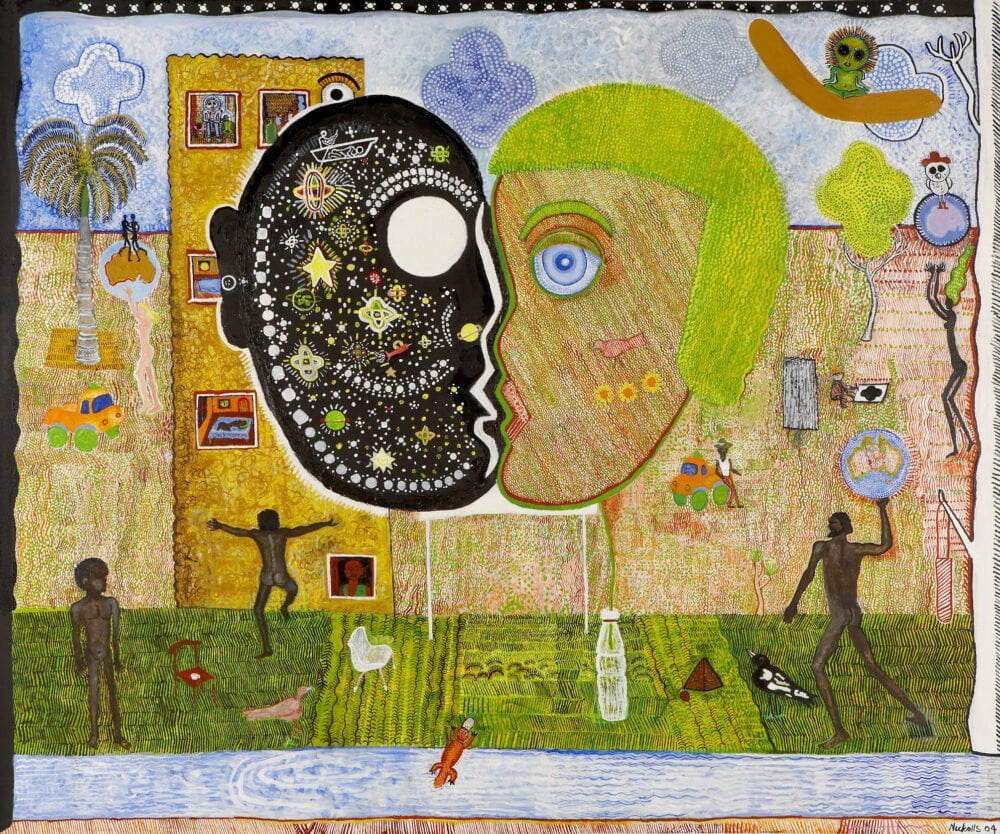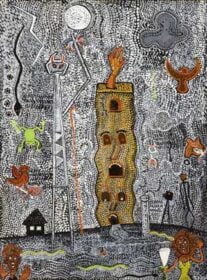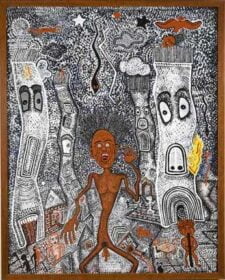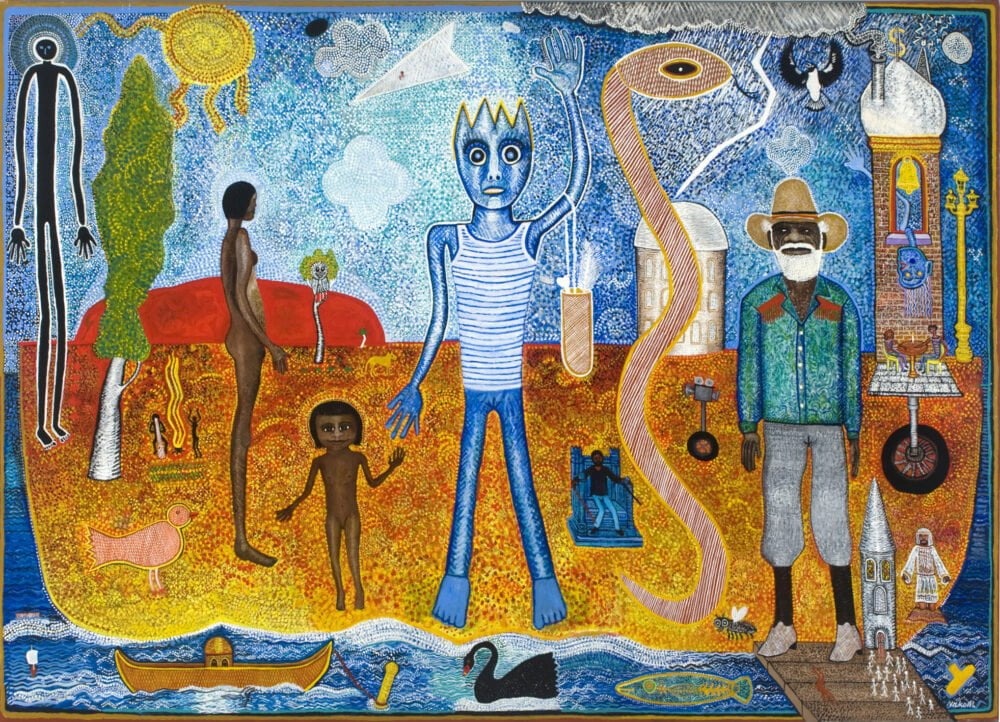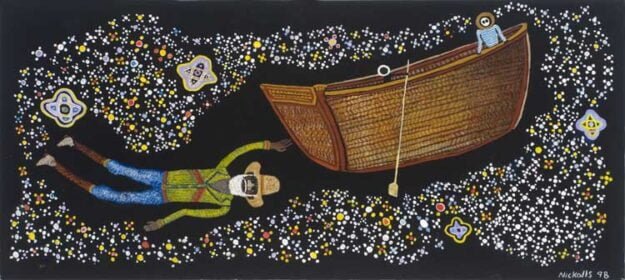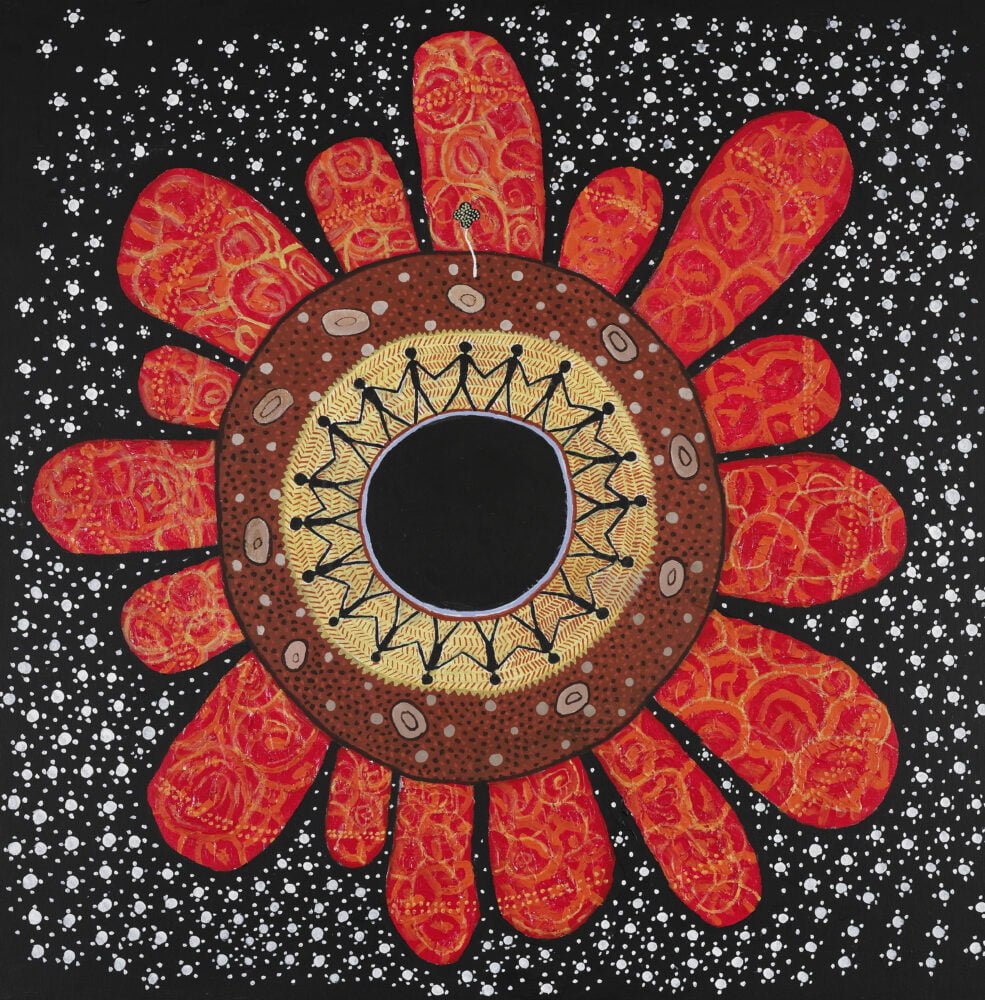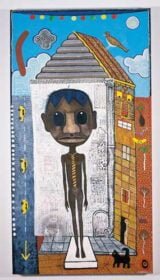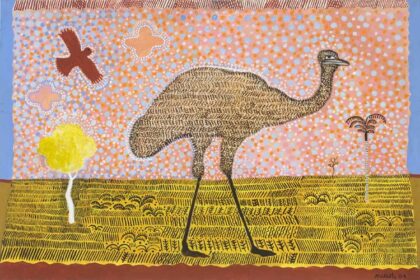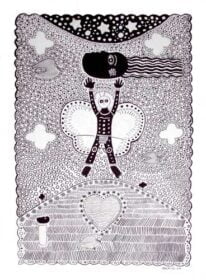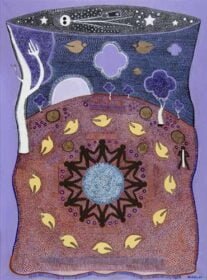Other side art: Trevor Nickolls, a survey of paintings and drawings 1972 – 2007—
Artists: Trevor Nickolls
Other side art is the first museum survey of the work of senior South Australian artist, Trevor Nickolls who has been described as ‘the father of urban Aboriginal art’. He stands as a seminal figure whose career has spanned an unprecedented era of Aboriginal cultural expression. This major survey exhibition will chart in detail Nickolls’s themes, symbols and techniques to establish a powerful comprehension of his inspiration and direction.
Spanning Nickolls’ work over a thirty-five year period, the survey tracks the social history of Australia using the artist’s visual vocabulary, his own iconic language that has influenced and informed subsequent indigenous artists’ practice. Nickoll’s unique vision set the direction for a generation of urban indigenous artists.
The survey includes more than 55 paintings and works on paper, brought together for the first time from public and private collections across Australia.
The exhibition has been curated by Michael O’Ferrall, a senior independent consultant and curator who has worked with Trevor Nickolls for over three decades, including as the curator of the official Australian Pavilion at the 1990 Venice Biennale, which presented Nicholls’s work alongside Kimberley artist Rover Thomas.
Nickoll’s works are widely recognised for their ‘dreamtime/machinetime’ theme, which combines the sheer natural wonder of the Aboriginal land and Dreamtime stories with robust symbols of urban Australia, and has become an enduring leitmotiv for the dichotomy of European and Aboriginal histories in Australia.
His drawings and paintings reflect his personal experience as a Nunga man and his relationship to land, place and history. These relationships are of universal relevance. They make accessible ideas about nature vs nurture, the psychological and physical self, black and white, ‘insider’ and ‘outsider’ that inform our experience of contemporary life.
Director of the Ian Potter Museum of Art, Chris McAuliffe, says the exhibition will establish for new audiences a strong sense of Aboriginal cultural history and socio-political experience.
“It will connect contemporary artists to a tradition of endeavour and experiment. The project will have a substantial impact on younger artists, who, in experiencing survey exhibitions, discover role models and see at first-hand the meaning of commitment, longevity and personal vision”, McAuliffe said.
2009
Learning Guides
-

Trevor Nickolls Mother Earth and Father Space stealing a kiss during the war against humanity 2004
Synthetic polymer paint on canvas
150 x 180 cm
Collection of Arthur Roe, Melbourne -

Trevor Nickolls The flood 1991
Synthetic polymer paint on canvas
59 x 44 cm
Collection of Paul and Catherine Evans, Sydney -

Trevor Nickolls Urban scream c. 1993
Synthetic polymer paint on canvas
75.2 x 59.5 cm
Collection of Paul and Catherine Evans, Sydney -

Trevor Nickolls Roving in Thomas town 1994
Synthetic polymer paint on canvas
153 x 213 cm
Private collection, Perth -

Trevor Nickolls Roving free 1998
Oil and synthetic polymer paint on canvas
45.5 x 101.5 cm
Private collection, Alice Springs -

Trevor Nickolls Warmun mandala 2002
Synthetic polymer paint on canvas
122 x 122 cm
Private collection, Perth -

Trevor Nickolls Dreamtime initiation on the catwalk 2002
Synthetic polymer paint on canvas
180 x 95 cm
Collection of Arthur Roe, Melbourne -

Trevor Nickolls The end of a dream 2004
Synthetic polymer paint on canvas
90 x 120 cm
Collection of Dr L and Mrs K Kritharides, Sydney -

Trevor Nickolls Emu Dreaming 2004
Synthetic polymer paint on canvas
60 x 90 cm
Private collection, Melbourne -

Trevor Nickolls Metamorphosis 2006
Charcoal on paper
70 x 50 cm
Collection of Vivien Anderson and Gilles Terrier, Melbourne -

Trevor Nickolls Sunrise around the billabong 2007
Synthetic polymer paint on canvas
182 x 135 cm
Private collection, Adelaide
Courtesy the artist

